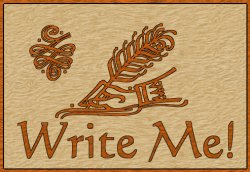Variations on the 2 Row, 21 Button Diatonic Keyboard
- With Accidentals
- With Reversed Accidentals
- With Low Notes
- Dutch System
- Daniel Thonon's System
- Extended Scale
With Accidentals
This is the normal, standard, modern, default, off-the-shelf layout. What more do I need to say? It does a little bit of everything. The accidentals are set up for playing accidentals conveniently within the home keys, especially in tunes which favor the outside row.
2 row 21 button G/C with accidentals
With Reversed Accidentals
This is the normal layout except that the accidentals are reversed. Many players find this to be a useful modification, and it is relatively common, especially on the Continent. Reversing the accidentals makes the accordion more suited to playing in other keys especially in the key of D, but slightly less convenient for playing accidentals within the home keys.
2 row 21 button G/C with reversed accidentals
With Low Notes
This layout used to be much more common than it is today. It was, at one time, the standard layout for the button box. In fact, some players refer to it as the "old layout" or the "traditional layout". The thing to know about this layout is that it is much more strictly diatonic than the layout that we are now used to. It doesn't have any accidentals....well, maybe one per row; an F# for the inside row, and an F for the outside row. These are the notes that aren't common to the two keys on the accordion. One redeeming factor of this layout is that it plays in the home keys quite well. It has a reversal for the G major tonic which allows one to play the G major and C major chords in both directions. Most players would find the accidentals more useful, especially for the modern repertoire.
2 row 21 button G/C with low notes
Dutch system
In the Netherlands, it is common to make a slight modification to the standard system with accidentals. The reeds of the 5th button on the inside row are flipped over so that what was on the push is now on the pull and vice versa. What makes this useful is that that particular button has the tonic of the outside row (G) and the tonic of the minor key of the inside row (A), neither of which has reversals elsewhere on the keyboard. In fact, they are the only two notes which are common to both keys which don't have reversals available. So with this modification, all the shared notes have reversals. This opens up a whole range of possibilities for right hand chording and melodic runs in either bellows direction. In effect, the player can choose how much impact the bellows should have on a tune, as well as play some treble chords that are otherwise unavailable. In addition, this modification does not add weight or bulk to the accordion and does not sacrifice the accidentals. On the negative side, tunes played on the inside row must be played cross-row, and it requires a slight relearning of the fingering.
2 row 21 button G/C Dutch system
Daniel Thonon's system
This system is, I think, best suited to a very specific repertoire which favors tunes in a minor key. What it does is sacrifice one of the reversed accidentals (the G#) for a reversal of the A. Again this allows more choice in chording and bellows direction, like the Dutch system but to a lesser degree. There is a large, IMHO, downside to this system is that it seems that that one particular accidental is used in a lot of tunes, and yet the reversal is far enough away from where it belongs in the scale that the jump is a little difficult to make smoothly. In addition, I think that most players would find a reversal of the G to be more useful than the A. For somebody interested in this sort of modification, I would recommend the Dutch system first. There you get even more benefits with a lot less downside.
2 row 21 button G/C Daniel Thonon's system
Extended Scale
This system does away with both accidentals and reversals and simply continues the normal pattern of the two rows an extra button lower. In effect it extends the range of the instrument. This is its only advantage. The trade-offs are considerable. You lose accidentals, reversals, and yet you still don't get a complete extra octave. Much like the upper end of the keyboard, the lower end starts to get a little funky and you end up missing some notes in your octave. On the positive side, you already know the fingering pattern.
2 row 21 button G/C with Extended Scale
